February Birthstone: A Complete Guide to Stunning Amethyst
Aryan K | February 25, 2025
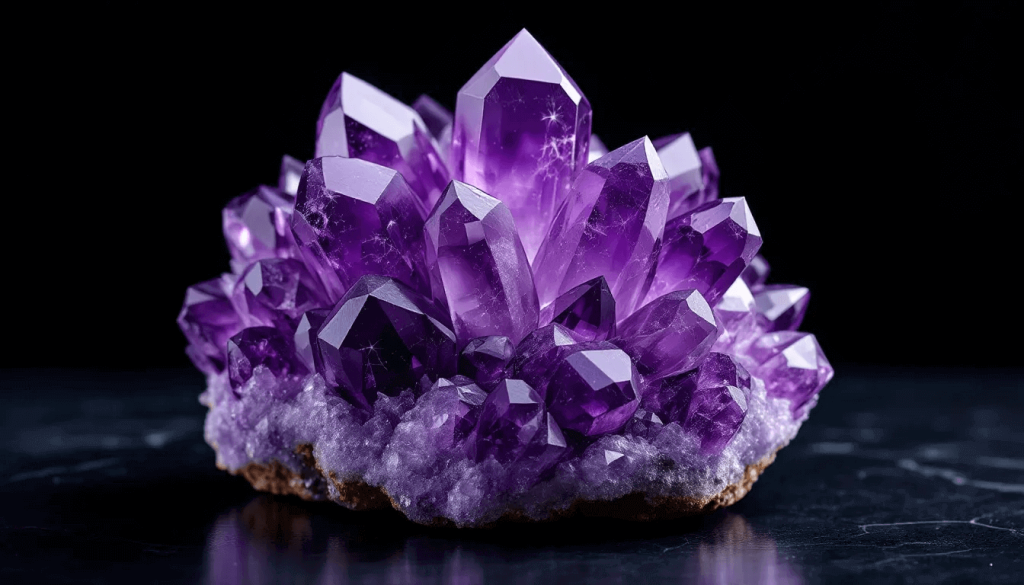
- Key Takeaways
- February Birthstone: Amethyst Overview
- The Meaning Behind Amethyst
- The Rich History of Amethyst
- Amethyst Colors and Varieties
- Healing Properties and Benefits
- Major Sources of Amethyst
- How to Care for Your Amethyst
- Lab-Created vs. Natural Amethyst
- Popular Amethyst Jewelry Designs
- Buying Tips for Amethyst Jewelry
- Unique Amethyst Forms
- Interesting Facts About Amethyst
- Famous Amethyst Pieces
- Summary
- Frequently Asked Questions
The birthstone for February, the captivating amethyst, is known for its stunning purple hue. Amethyst, the February birthstone, has historical significance and is celebrated for both its beauty and its purported benefits. This guide will explore the rich history, meaning, varieties, and care tips for this beloved gemstone.
Key Takeaways
Amethyst, the February birthstone, is highly valued for its stunning purple color and is historically linked to personal empowerment, luxury, and emotional stability.
The gemstone offers various shades, with unique varieties such as Siberian amethyst and Ametrine, each possessing distinct visual attributes and appeal.
Amethyst is celebrated not only for its aesthetic qualities but also for its purported healing properties, including stress reduction and enhanced spiritual awareness.
February Birthstone: Amethyst Overview
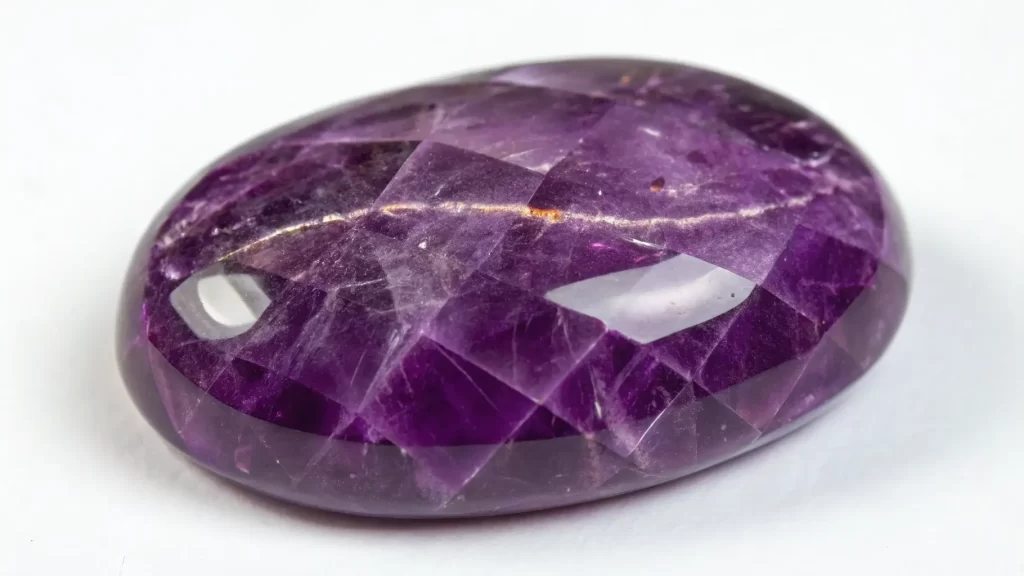
Amethyst, the February birthstone, is famous for its vivid purple color, a captivating blend of violet and red hues. Historically linked to St. Valentine, who is said to have worn an amethyst ring symbolizing pure love, this gemstone boasts a rich amethyst birthstone meaning history and storied past, celebrated among various birthstones.
Amethyst is not only historically significant but also valued for its beauty, availability, and durability, making it popular in various forms of jewelry. Its versatility, from rings to necklaces, keeps it a favorite among jewelry enthusiasts.
The Meaning Behind Amethyst
With colors ranging from soft lilac to deep purple, amethyst is a symbol of personal empowerment and inner strength. It’s believed to enhance clarity and quick thinking, making it a valued stone in both personal and professional contexts.
Ancient European royalty favored amethyst for its deep purple color, symbolizing power and luxury. During the Renaissance, Europeans believed the stone could calm those overwhelmed by passion, providing emotional stability and confidence to its wearers.
The name ‘amethyst’ derives from the Greek word for ‘a remedy against drunkenness,’ reflecting its association with Bacchus, the wine god. This historical belief suggests that amethyst can bring clarity and focus to its wearers.
The Rich History of Amethyst
Amethyst’s history dates back to ancient times when it was as rare and valued as rubies and Ruby emeralds. It was considered one of the cardinal gemstones until large deposits were discovered in the 1700s, making it more accessible. Royalty has long admired amethyst’s deep purple color, from Alexander the Great’s era to modern times.
The gem’s association with Bacchus, the Roman god of wine, adds to its mystique. Amethyst was believed to prevent intoxication, a belief that persisted in ancient Greek and Roman cultures. Its use in royal crowns and religious jewelry signified its importance and high status.
Catherine the Great of Russia owned an extensive collection of amethyst jewelry, showcasing her taste for luxury. The Delhi Purple Sapphire, often mistaken for a sapphire, is an amethyst with a storied past and a legend of bad luck, now displayed at the Natural History Museum in London. Amethyst has remained cherished throughout history, adored by many, including modern admirers, and sapphires have also captivated collectors.
Amethyst Colors and Varieties
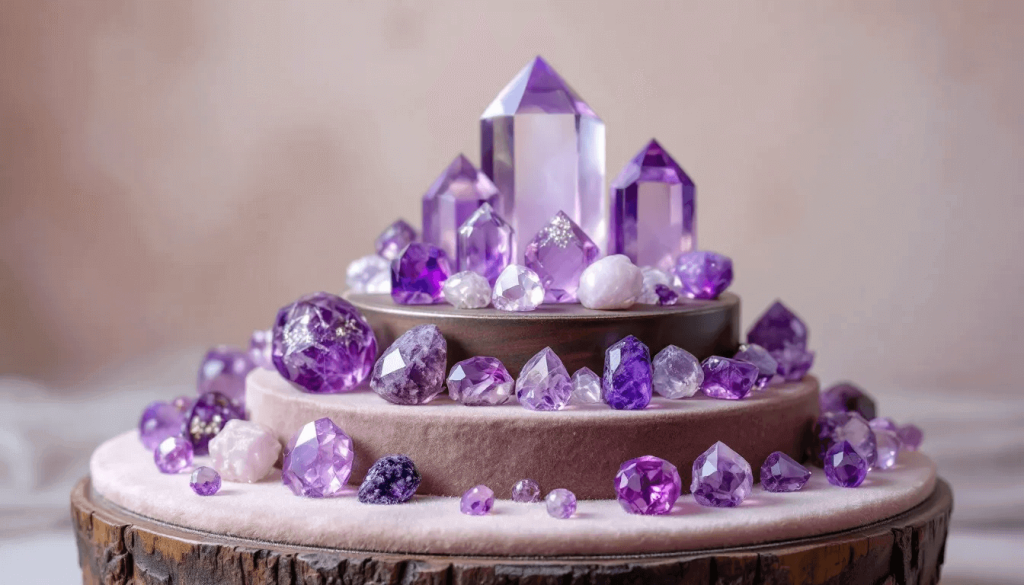
Amethyst is celebrated for its stunning color spectrum, ranging from pale lilac to intense violet, making each piece unique. Siberian amethyst, renowned for its rich purple variety color with flashes of red and blue, is particularly sought after.
‘Rose de France’ amethyst, characterized by its pale, pinkish violet or lilac hue, offers a delicate alternative for those who prefer softer shades. Cape Amethyst, also known as Chevron or Banded Amethyst, features a blend of amethyst and white quartz, presenting a striking visual contrast that is highly prized.
Ametrine, a unique form of amethyst, combines the purple of amethyst with the yellow or orange hues of citrine, creating a beautiful bicolored effect. This unusual combination adds to the allure and diversity of amethyst and ametrine crystals.
Healing Properties and Benefits
Amethyst is not just visually stunning; it’s revered for its healing properties. Known for reducing stress and anxiety, it promotes a sense of calm and tranquility, making it popular for those seeking emotional stability and peaceful interactions.
Amethyst is also believed to enhance clarity and wit, making it valuable in both personal and professional contexts. Associated with the crown and third eye chakras, it is thought to enhance psychic abilities and spiritual awareness. Tibetan Buddhist monks use amethyst to create prayer beads for meditation and focus.
Amethyst serves as a powerful ally for those seeking to develop their intuition and spiritual awareness. Its ability to connect individuals to their higher selves and enhance self-awareness makes it a cherished stone for many.
Major Sources of Amethyst
Amethyst can be found worldwide, with Brazil being a significant source. In 2016, Brazil accounted for nearly 66% of global production. Brazilian amethyst is often lighter in color compared to amethyst from other regions.
Zambia’s Kariba mine is another notable source known for producing high-quality amethyst in significant quantities. Before the 19th century, Russia, particularly the Siberian regions, was a major supplier. Other notable sources include Korea, which also has significant deposits.
The diverse origins of Amethyst contribute to the variety of colors and qualities available on the market, making it a versatile and widely appreciated gemstone.
How to Care for Your Amethyst
Proper care maintains the beauty and longevity of amethyst jewelry. Avoid cleaning with steam or subjecting it to extreme temperatures, as this can cause damage. Instead, use a soft brush and mild soap, rinsing with warm water. Amethyst birthstone care cleaning is essential for preserving its quality.
To prevent scratches and other damage, store amethyst jewelry individually wrapped in cloth or in a jewelry box with separate compartments. Keeping it separate from softer stones prevents scratching.
Avoid prolonged sunlight exposure to prevent color fading. Additionally, harsh chemicals like hydrofluoric acid or alkaline solutions should be avoided to prevent damage.
Lab-Created vs. Natural Amethyst
The debate between lab-created and natural amethyst often centers on appearance and value. Synthetic amethyst has the same properties as natural amethyst, making it challenging to distinguish without testing. However, synthetic amethysts are chemically identical but exhibit more uniform coloration.
Experienced gemologists can differentiate between the two by examining crystal growth patterns. Natural amethysts may contain flaws, while lab-created ones do not. Natural amethysts often undergo heat treatment to enhance color, a process unnecessary for lab-created stones.
When purchasing amethyst jewelry, knowing whether it is natural or lab created amethyst is essential, as this affects the value and marketability of the piece.
Popular Amethyst Jewelry Designs
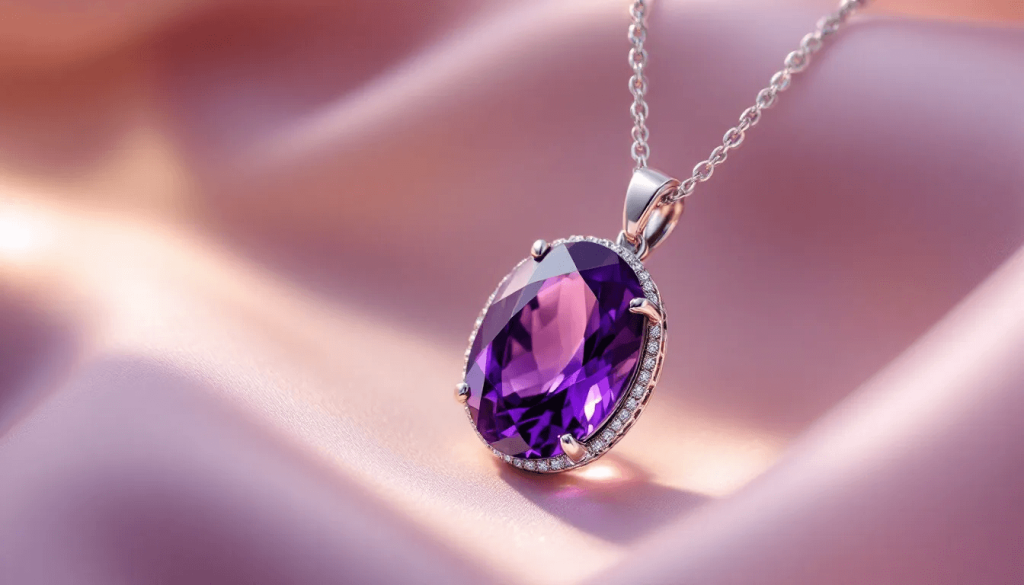
Amethyst jewelry is cherished for its striking purple color and versatile design. Common types include stunning rings, elegant earrings, and beautiful necklaces that enhance any outfit. Historical figures like Catherine the Great were known for their extensive collections, showcasing amethyst’s enduring appeal.
Modern designs often feature amethyst set in various materials, including luxurious recycled 18k gold, providing an eco-friendly choice for elegance. Contemporary designers continue to create unique pieces, ensuring amethyst remains a favorite among jewelry enthusiasts.
Buying Tips for Amethyst Jewelry
When buying amethyst jewelry, the most desirable pieces feature a vivid reddish-purple tone without noticeable color zoning. The value of amethyst is determined by its color rather than weight, with the rare ‘Deep Russian’ shade being particularly sought after. Amethyst stones with brown or bronze tinges significantly lower their market value.
Reputable brands like GLDN offer delicate amethyst jewelry made from 90% recycled materials, while Brilliant Earth provides eye-catching pieces crafted from recycled precious metals. Brands like Starling, Aurate, and Mejuri offer customizable and minimalist designs, ensuring a perfect piece for every taste.
For custom and ethical jewelry, Gardens of the Sun focuses on ethically sourced gold from Indigenous women miners, and Monica Vinader offers amethyst pendants with customization options like complimentary engraving, making each piece a true gem.
Unique Amethyst Forms
Ametrine is a unique stone combining both purple and yellow colors, resulting from the heating of amethyst. Bolivia’s historic Anahí mine is famous for its bicolored ametrine crystals, and captivating collectors.
Prasiolite, often called Green Amethyst, is another unique form that arises from heating purple amethyst to produce a pale green variety. Large heart-shaped amethyst cabochons are popular for their smooth finish and are often used in jewelry making.
Interesting Facts About Amethyst
The name ‘amethyst’ comes from the Greek word meaning ‘remedy against drunkenness.’ The ancient Greeks believed that amethyst prevented drunkenness, a belief that persisted through Roman culture as well.
Amethyst sometimes occurs in hollow, crystal-lined geodes, adding to its intriguing natural formations. Associated with calming energy, it is suitable for meditative practices and promoting restful sleep.
Famous Amethyst Pieces
Wallis, Duchess of Windsor, famously wore a distinctive amethyst bib necklace designed by Cartier at a gala in 1953. This piece, along with a similar necklace crafted by Cartier in 1947, highlights amethyst’s enduring allure in high fashion.
Queen Silvia of Sweden’s tiara includes amethysts originally part of a necklace owned by Empress Josephine of France. Another notable piece is the Morris Amethyst Brooch, featuring a prominent 96-carat heart-shaped amethyst, housed in the Smithsonian Institution.
Summary
In summary, amethyst is a gemstone of unparalleled beauty and rich historical significance. Its vivid purple hues, symbolic meanings, and healing properties make it a cherished stone for many. Whether you’re drawn to its calming energy or its royal connections, amethyst continues to captivate and inspire.
As you explore the world of amethyst, remember its unique varieties and the care required to maintain its beauty. From historical pieces to modern designs, amethyst remains a timeless gem, worthy of its place as February’s birthstone.
Frequently Asked Questions
What is the significance of amethyst as a February birthstone?
Amethyst, as February’s birthstone, symbolizes pure love and is historically linked to St. Valentine, emphasizing its significance in matters of the heart. Its vivid purple hue further enhances its appeal as a cherished gem.
How can you distinguish between natural and lab-created amethyst?
You can distinguish natural amethyst from lab-created amethyst by examining for imperfections, as natural stones often have flaws and may have been heat-treated, while lab-created versions exhibit more uniform coloration.
What are some popular amethyst jewelry designs?
Popular amethyst jewelry designs include rings, earrings, and necklaces, frequently crafted from recycled 18k gold. These elegant pieces not only showcase the beauty of amethyst but also connect to historical figures renowned for their affinity for this gemstone.
What are the healing properties of amethyst?
Amethyst is recognized for its ability to reduce stress and anxiety, promote emotional stability, and enhance clarity and spiritual awareness. These properties make it a valuable aid in meditation and emotional well-being.
How should I care for my amethyst jewelry?
To care for your amethyst jewelry, clean it with a soft brush and mild soap, and avoid extreme temperatures and harsh chemicals. Additionally, store it individually wrapped to prevent damage and fading.
Recent Posts
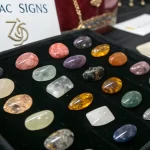
Find the Best Gemstones for Astrological Signs: A Comprehensive Guide
Aryan K | March 28, 2025

Exploring the Libra Personality: Traits of Those Born on September 28
Aryan K | March 28, 2025

Sagittarius Personality Explained: Traits, Love & Life
Olivia Marie Rose | March 28, 2025

Guide to the King of Cups: Tarot’s Emotional Wisdom
Aryan K | March 27, 2025

Discover the Emotional World of Cancer: July 8 Zodiac Guide
Aryan K | March 27, 2025
Topics
- 4 Digit Angel Numbers
- 5 Digit Angel Numbers
- 6 Digit Angel Numbers
- Astrology and Birth Charts
- Business Astrology
- Career Astrology
- Celebrities and Personalities Astrological Profile
- Children Astrology
- Chinese Astrology
- Different Angel Numbers Meaning
- Double Digit Angel Numbers
- Dreams Interpretation
- Festivals
- Finance Astrology
- Find Baby Names
- Find Best Astrologers
- Gemstones and Birthstones
- Janam Kundli Chart
- Love Astrology
- Marriage Prediction Astrology
- Nakshatra (Constellations)
- Numerology
- Pet Astrology
- Rudraksha Beads
- Single Digit Angel Numbers
- Spirit Animals
- Spirituality and Positivity
- Stars, Planets and Cosmic
- Symbolism
- Tarot Cards
- Triple Digit Angel Numbers
- Understanding Hinduism
- Vastu Shastra
- Vedic Astrology
- Western Astrology
- Yoga and Meditation
- Zodiac Sign Date Calendar
- Zodiac Signs
- Zodiac Signs Compatibility
